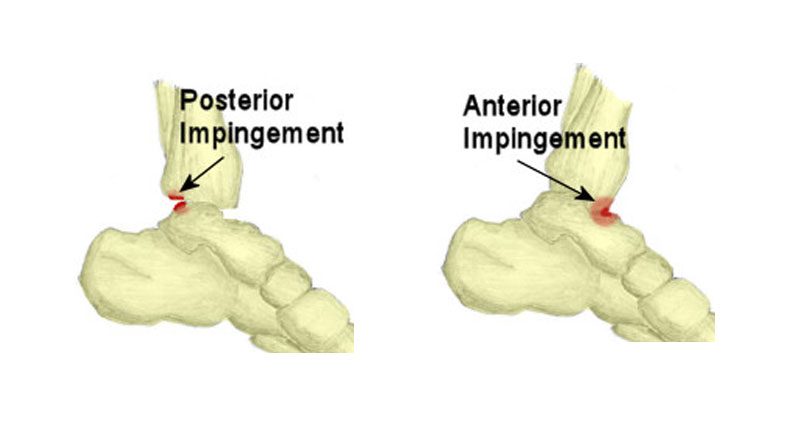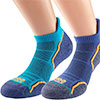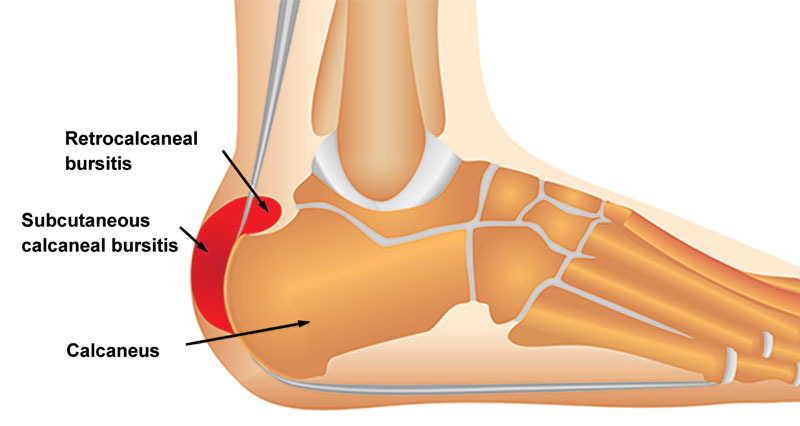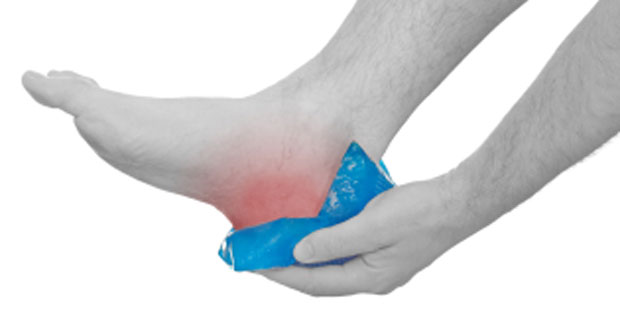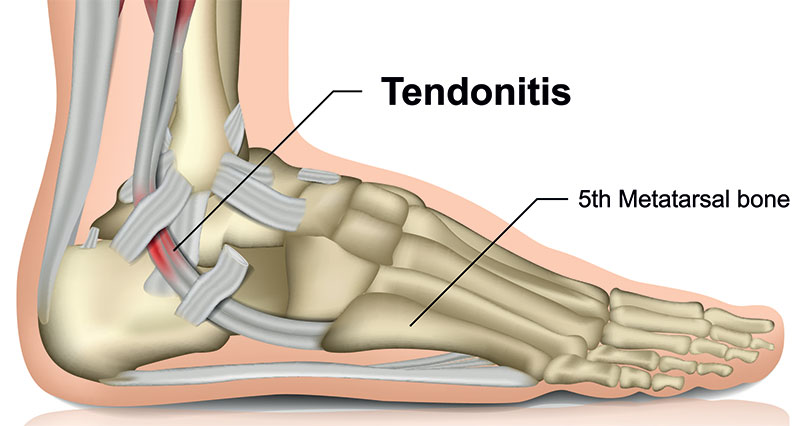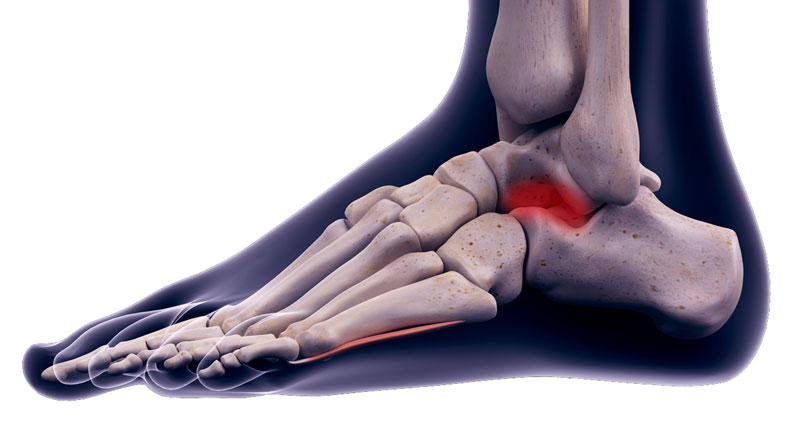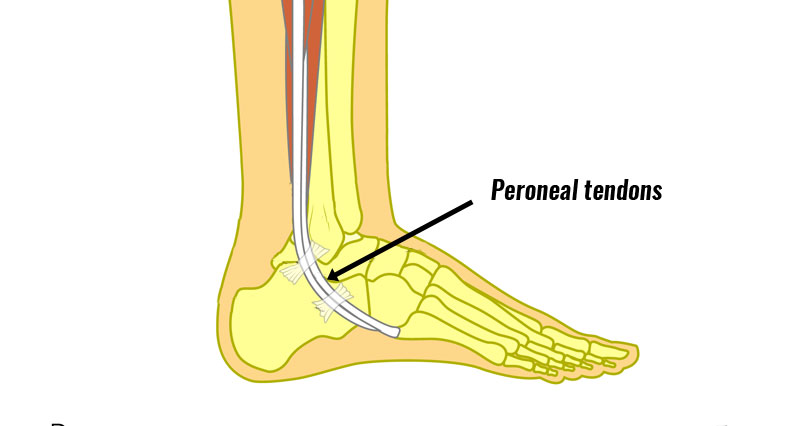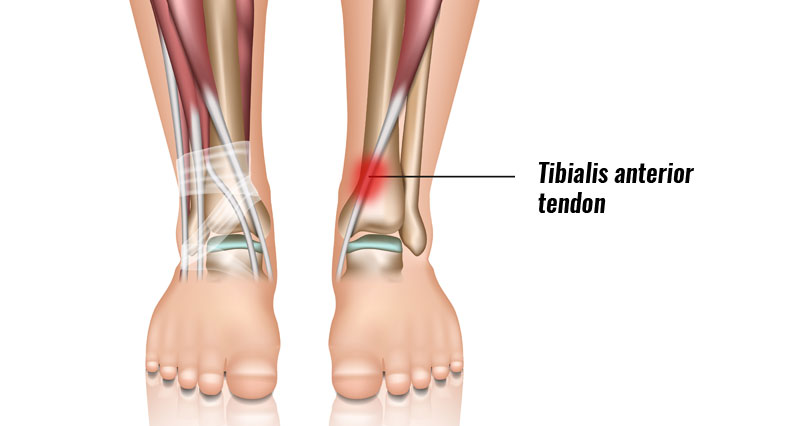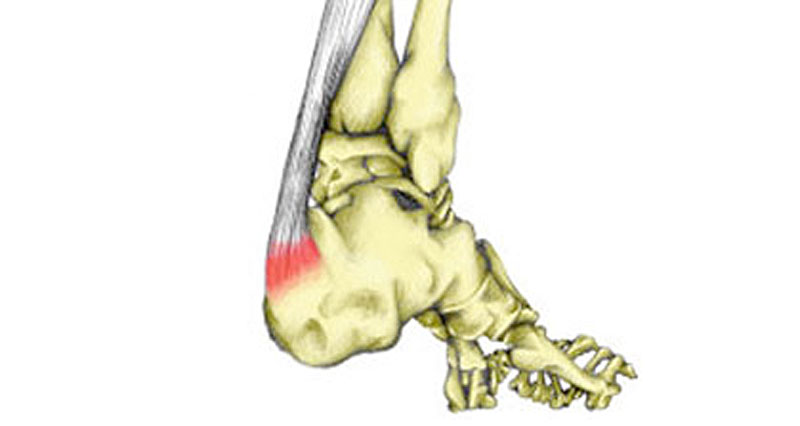Ankle impingement occurs when a bony growth at either the front or back of the ankle bone restricts the normal range of motion. This results in pain at the front, back, or even sides of the ankle. Here we explain the symptoms, causes, and treatment of ankle impingement.
Symptoms of anterior impingement
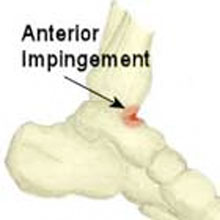
- Symptoms include pain felt at the front or side of the ankle.
- Often it may follow a sprained ankle which may have healed but impingement pain remains.
- Your ankle is weak.
- A giveaway sign of impingement is pain when forcing or passively moving the ankle into dorsiflexion (foot points upwards).
Symptoms of posterior Impingement
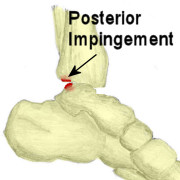
- Pain at the back of the ankle.
- There will be tenderness behind the bottom tip of the fibula bone.
- Pain at the end range of movement when the foot points down (plantarflexion).
- Going up onto tiptoes may be painful.
- An X-ray can show up any bony spurs on the talus (heel bone) and end of the tibia (shin bone).
What causes impingement syndrome?
Tissues in the ankle joint can become trapped between bones. It occurs either when the ankle bends fully up (dorsiflexed) or down (plantar flexed).
Posterior impingement in the back of the ankle is more common in ballet dancers and can be due to a bony protrusion at the back of the ankle. Anterior impingement can follow a bad ankle sprain. This is because ligaments become thicker. As a result, the tibia and talus pinche them.
As the torn or ruptured ligament heals, the body forms too much scar tissue along the front and around the side of the ankle joint creating a meniscoid lesion.
Impingement syndrome treatment
- Rest for up to 4 weeks.
- A plaster cast or splint may be fitted to restrict movement of the ankle.
- Cold therapy or ice can be applied to reduce pain and inflammation.
- A doctor may prescribe NSAIDs (nonsteroidal anti-inflammatory medication).
- If conservative treatment does not work then surgery may be considered.
